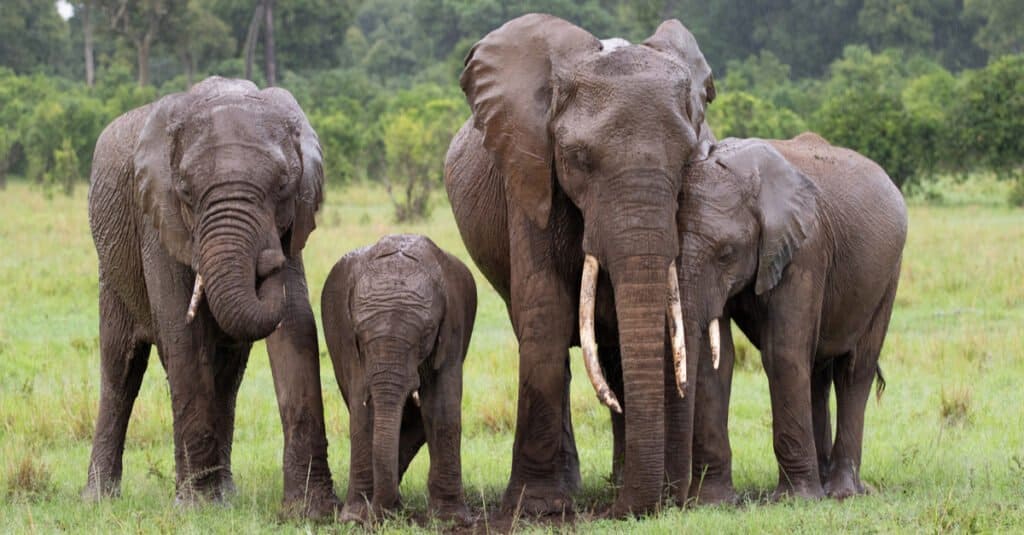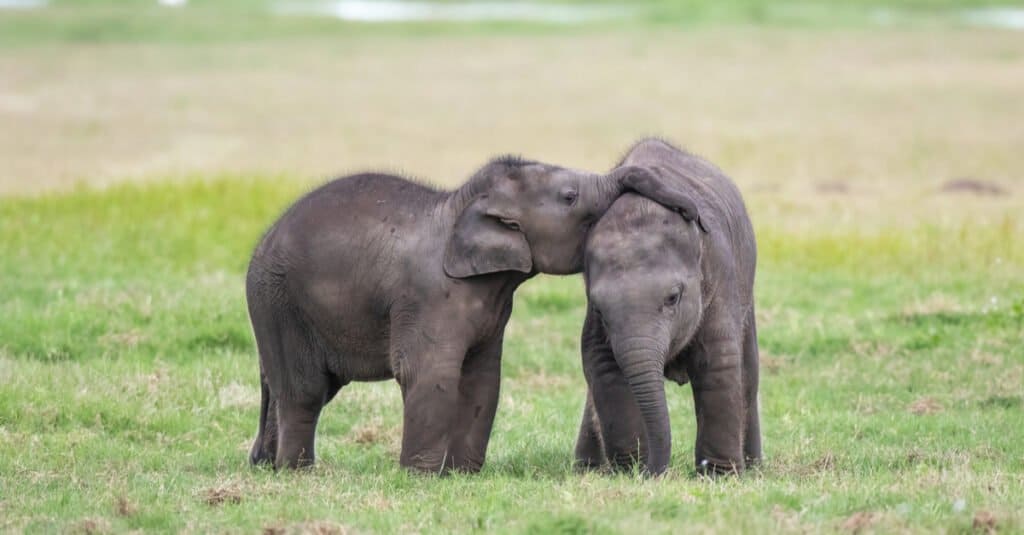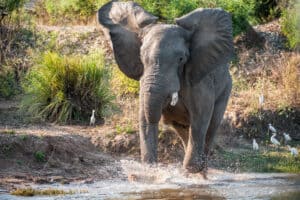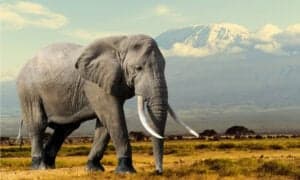If you’ve ever seen pictures of videos of elephants walking, eating, or perhaps playing together, you’ve probably wondered at some point: what is a group of elephants called?
Research has shown that elephants are incredibly emotionally intelligent animals who are capable of expressing complex emotions like joy, love, anger, empathy, and even grief. They are highly social and enjoy interacting with other members of their species. This means elephants rarely live alone, as they generally prefer being around one another.
So, what is the official name for a bunch of elephants? What sort of hierarchy or structure takes place within their groups? Let’s take an in-depth look at how families of elephants function and how many individuals typically live alongside one another at a time. We’ll also explore how baby elephants grow up within these groups and how the males’ and females’ roles differ.
Elephant Herds: All in the Family

A herd of elephants of varying ages
©Neil Tyers/Shutterstock.com
A group of elephants is commonly called a herd or, less commonly, a parade!
Above all else, herds are family groups. Herds vary significantly in size, but their structure is consistently multigenerational and matriarchal. A typical herd is led by one female elephant matriarch. This matriarch is usually the oldest in the group and unofficially leads the herd, which generally consists of most of her offspring and those offsprings’ own offspring.
Elephant herds are surprisingly close-knit. From protecting one another from predators to ensuring every member of the herd has access to food and water, these groups of elephants are highly protective of one another and are incredibly empathetic and social. In fact, they are known to grieve for several weeks or even months at a time whenever a beloved member of the herd passes away.
Whenever the leading matriarch of a herd dies, another female elephant, usually the second oldest in the group, will take her place. But if elephant herds are mostly female, then where do the males live?
Do Male Elephants Live in Herds?

A playful moment between two baby elephants
©Saranga/Shutterstock.com
Male elephants live in their family groups while they are babies. They stay close to their mothers throughout their infancy and much of their adolescence.
However, once they reach puberty at roughly 12 to 15 years of age, the males will leave their herd behind. They will then either live and roam by themselves or live in a small, loosely structured group of other male elephants, or bulls, of roughly the same age.
African elephants tend to leave their initial family herds at around 10 to 12 years old. Asian elephants leave a bit later at roughly 14 to 15 years of age. The only time the males will interact with other adult females is during the female elephants’ mating season, also known as estrus or “rutting” season.
Once a sexually mature male elephant mates with a female, the two will part and return back to their groups. Alternatively, if the male lives alone, he’ll resume his lonely bachelorhood until the next mating season.
Male elephants tend not to play much of a role in the raising of their young. Instead, their babies will stick with their mother, who will raise them in her family group along with some help from her sisters. Once the baby elephants mature, the females will remain in the group. Meanwhile, the next generation of males will leave and repeat the above process all over again.
How Many Elephants Live in an Average Herd?

Two baby elephants with an adult close by
©Jacktamrong/Shutterstock.com
Elephant herds can range in size from as few as 6 individuals to as many as 100! The size of a herd depends on a variety of factors. These factors include terrain conditions, climate, and availability of resources like food and water. The overall success of the past breeding seasons also affects herd sizes.
Notably, Asian elephant herds are much smaller than African elephant herds. There are two main reasons for this. First, Asian elephants’ habitats are more compact and more densely populated by other plants and animals. More importantly, though, Asian elephants exist in far fewer numbers in the wild than African elephants.
While there are around 400,000 African elephants left in the wild, Asian elephants have only a fraction of that number. Around 40,000 wild Asian elephants remain in the wild. Fortunately, conservation efforts are slowly raising those numbers.
The photo featured at the top of this post is © Neil Tyers/Shutterstock.com
Thank you for reading! Have some feedback for us? Contact the AZ Animals editorial team.






